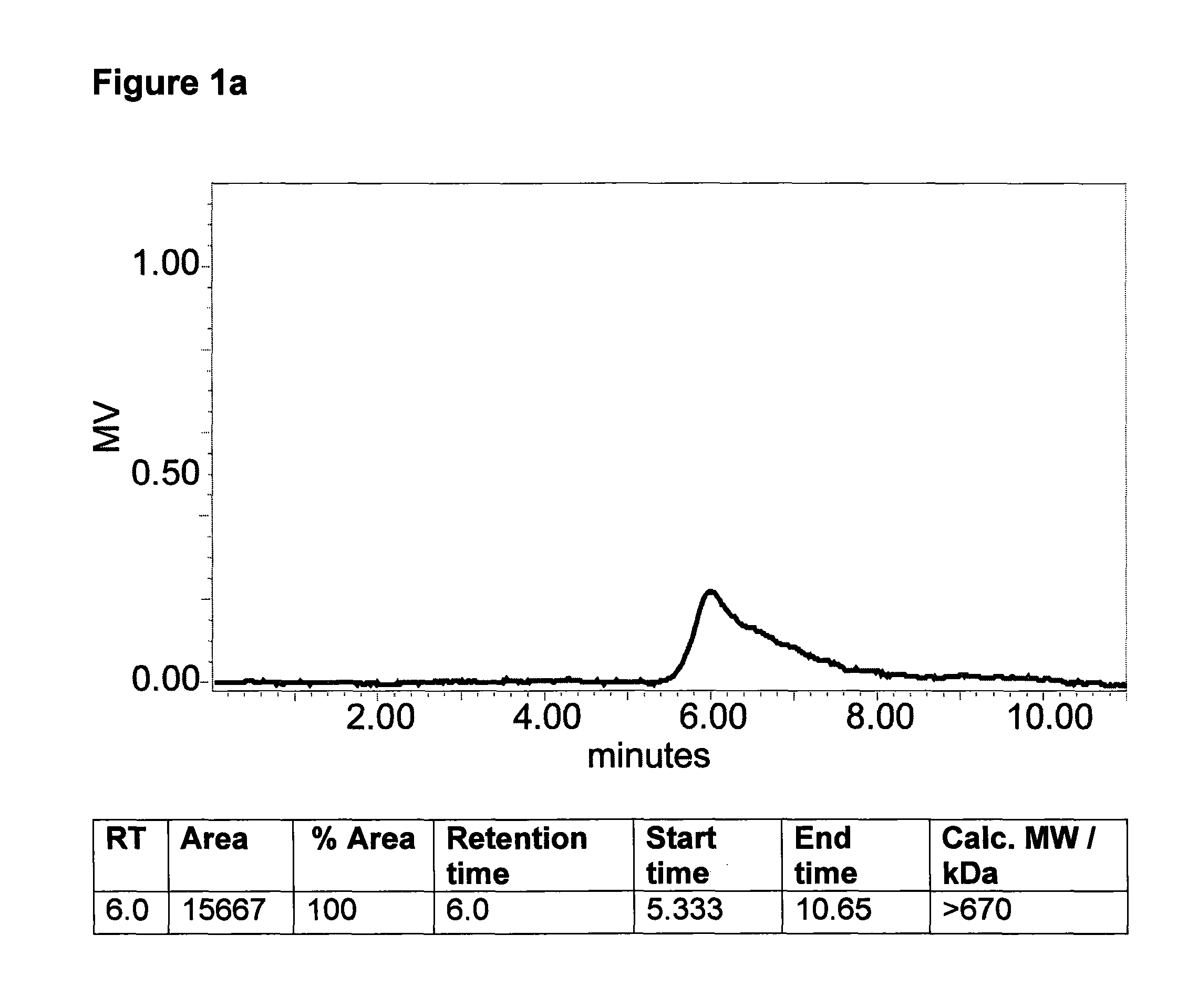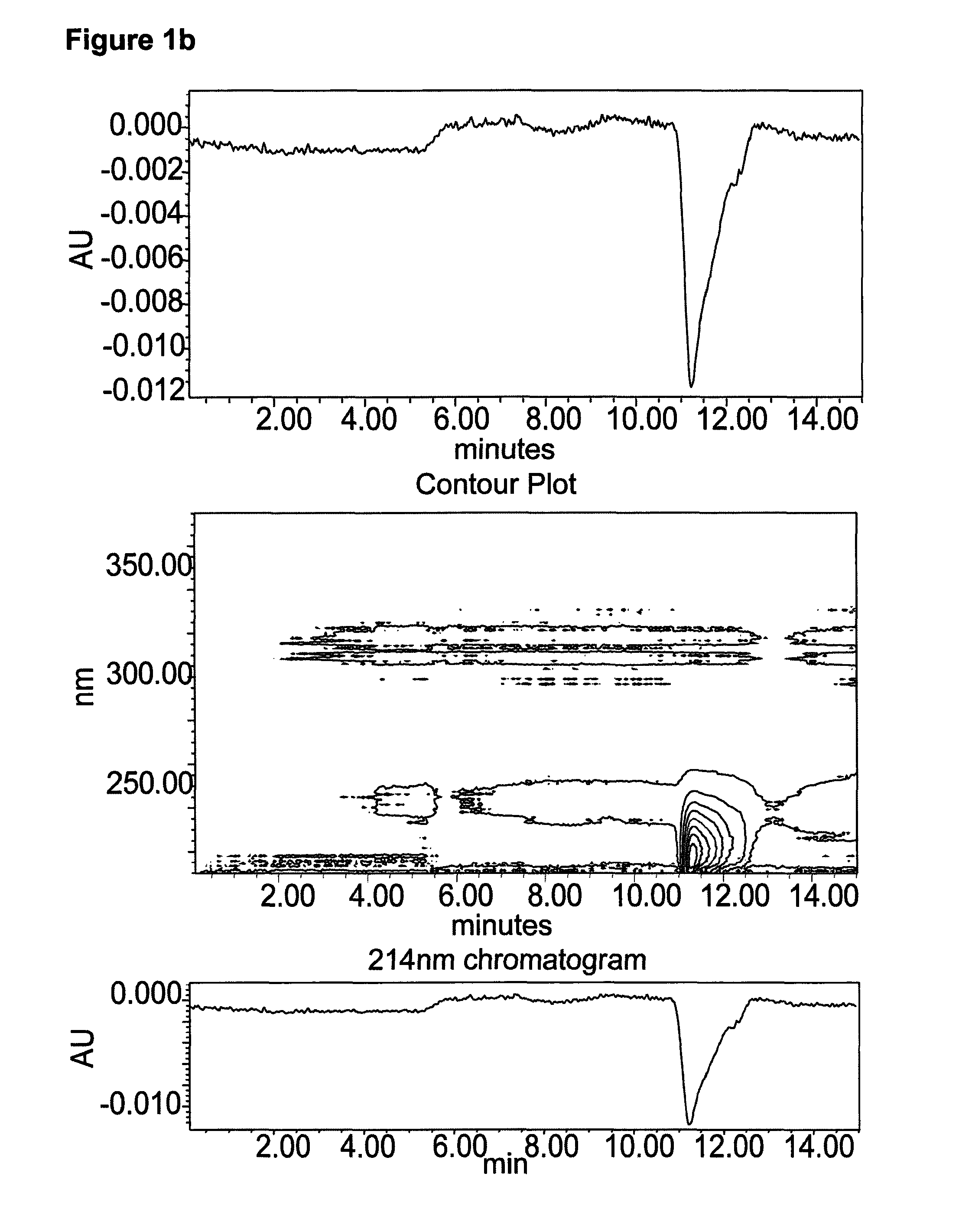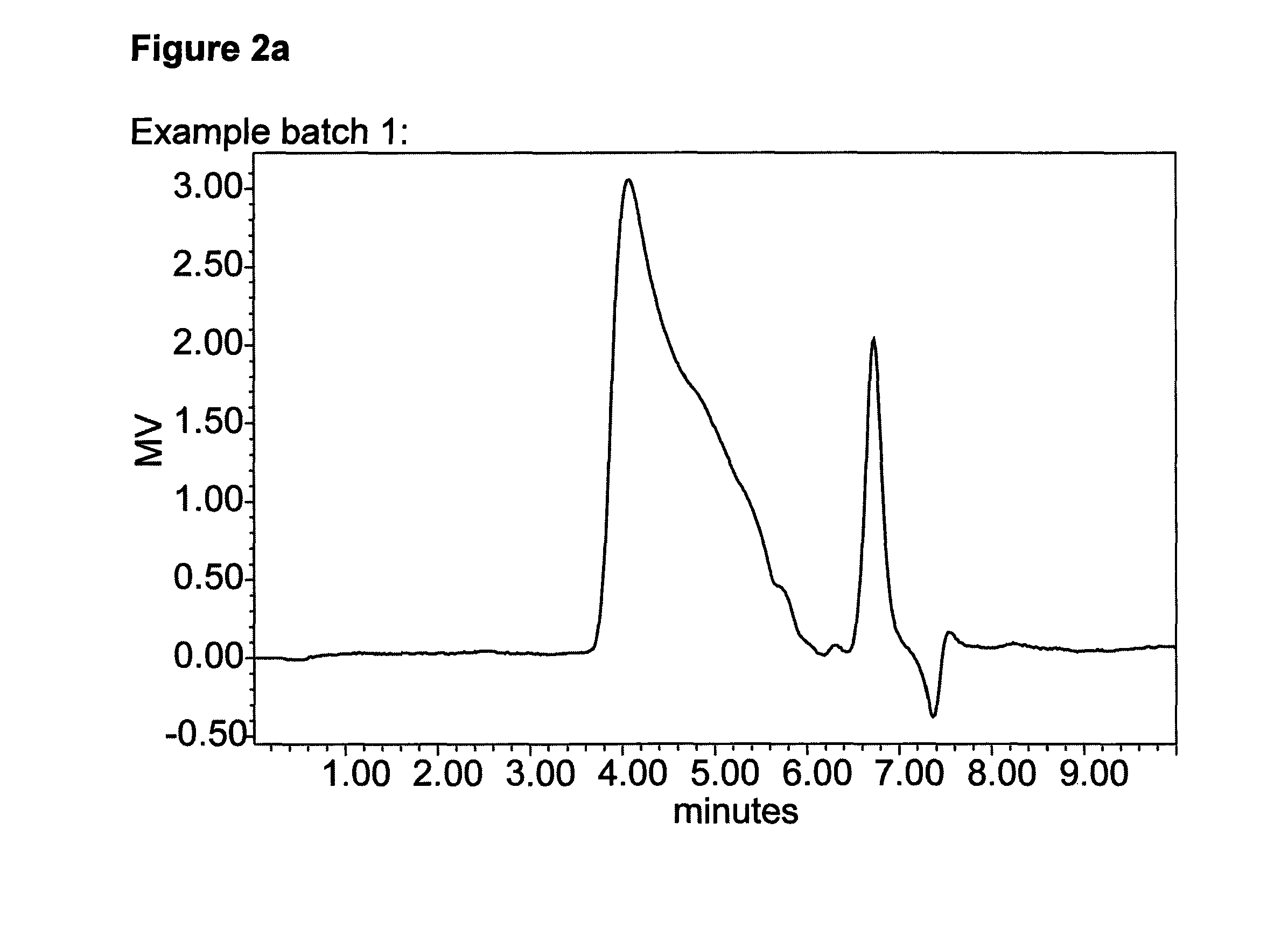Polysaccharides from prasinococcales
a technology of polysaccharides and prasinococcales, which is applied in the field of polysaccharides from prasinococcales, can solve the problems of relatively little characterisation of products derived from microalgae, and the absence of microalga
- Summary
- Abstract
- Description
- Claims
- Application Information
AI Technical Summary
Benefits of technology
Problems solved by technology
Method used
Image
Examples
example 1
Growth of Prasinococcus capsulatus Strain Cultures
[0129]P. capsulatus strain cultures were maintained in the laboratory at 50 or 100 mL f / 2 medium, with continuous light and at ambient (lab) temperatures (range throughout the year 18-28° C.). To set up the larger laboratory cultures, the stock culture was initially inoculated into 250 ml or 500 ml of f / 2 medium and grown to log phase. 250 ml or 500 ml cultures were inoculated into 10 or 20 liter clear polycarbonate carboys with a vent screw with PTFE air inlet and air exhaust filters, containing f / 2 medium autoclaved 116° C. for 30 mins. Inorganic phosphate and trace metals were autoclaved singly and separately added to the bulk of the medium after autoclaving.
[0130]Different amounts of CO2 / air mixes can be used, with different levels of illumination and temperature. Specifically 10 and 20 L cultures were sparged vigorously with air, with continuous illumination, using white fluorescent tubes at ambient (lab) temperatures: 18-28° C....
example 2
Harvesting Polysaccharide from Culture Medium
[0132]Polysaccharide can be obtained from culture medium by various centrifugation and filtration techniques. Specifically dense laboratory cultures (10-20 liters) were harvested and transferred to 4×600 ml centrifugation pots of Heraeus Multifuge 3L-R centrifuge. Centrifugation was at 4500 g for 2 hours per batch. The culture medium (supernatant) was transferred whilst the algal cells were pelleted in the centrifugation pot. The supernatant was further clarified by vacuum filtration (to remove residual cells), using a Whatman no. 3 filter.
[0133]This supernatant was then subjected to cross flow filtration using a Pall Centramate with a 0.1 m2 SkDa molecular weight cut off (MWCO) T-series membrane. Other MWCO's can be used, as long as below MW of polysaccharide. Sample was refiltered through a Whatman No. 3 filter post-thawing, before being circulated through the membrane. Retentate was re-circulated until concentrated to ×10 original volu...
example 3
Harvesting Polysaccharide from Cell Pellets
[0136]The cell pellets resulting from the removal of media can also be processed to generate target polysaccharide. This could be carried out by hot water extraction techniques, enzymatic digest or various other extraction protocols. Specifically cells were transferred to 50 mL sterile tubes and centrifuged for 2 h at 10,000 g. Remaining supernatant was removed and cells stored frozen for later extraction and processing. To process, the cells can be lysed and product removed using standard extraction techniques. Specifically cells were freeze-thawed three times prior to extraction. They were then mixed with an equal volume of Tris-HCl pH8, mixed with the enzyme alcalase 2.5 L DX (Novozyme) at a concentration of 1 vol enzyme to 100 vols sample, and incubated overnight at 60° C. with stirring. The sample was removed, spun at 10,000 g to pellet cell debris and the supernatant removed. This supernatant was dialysed against water using 8 kDa MWC...
PUM
| Property | Measurement | Unit |
|---|---|---|
| molecular weight | aaaaa | aaaaa |
| molecular weight | aaaaa | aaaaa |
| molecular weight | aaaaa | aaaaa |
Abstract
Description
Claims
Application Information
 Login to View More
Login to View More - R&D
- Intellectual Property
- Life Sciences
- Materials
- Tech Scout
- Unparalleled Data Quality
- Higher Quality Content
- 60% Fewer Hallucinations
Browse by: Latest US Patents, China's latest patents, Technical Efficacy Thesaurus, Application Domain, Technology Topic, Popular Technical Reports.
© 2025 PatSnap. All rights reserved.Legal|Privacy policy|Modern Slavery Act Transparency Statement|Sitemap|About US| Contact US: help@patsnap.com



